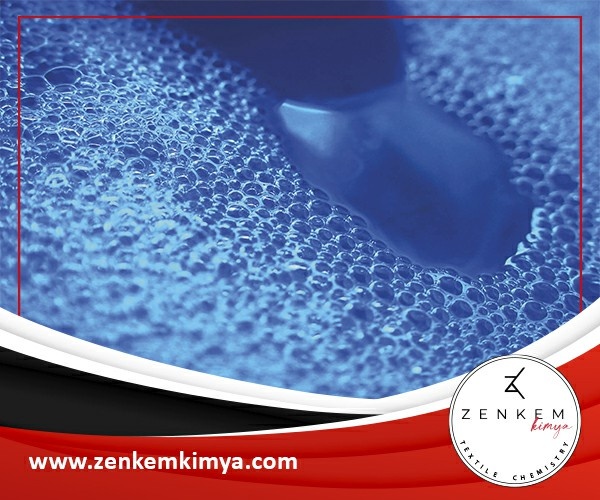How Defoamers Help Improve Performance in Coatings and Paints
How Defoamers Help Improve Performance in Coatings and Paints
Blog Article
The Role of Defoamers in Enhancing Item High Quality and Performance
In various manufacturing procedures, the existence of foam can substantially impede item high quality and functional efficiency. Defoamers act as important additives that alleviate this issue, guaranteeing smoother manufacturing workflows while improving the aesthetic and useful attributes of the last items (defoamers). Their application spans a multitude of industries, from food and beverage to drugs, where uniformity and integrity are critical. Nevertheless, the choice of the appropriate defoamer can be important to accomplishing optimum outcomes, raising vital inquiries about solution compatibility and efficiency metrics that warrant additional exploration.
Understanding Defoamers
Understanding the role of defoamers is essential for keeping product quality throughout numerous sectors. Defoamers are chemical additives created to stop the formation and reduce of foam in liquid systems, which can adversely influence processes such as mixing, filling, and surface area tension. Frothing can cause inadequacies, item issues, and endangered aesthetic allure, making defoamers an essential part in producing procedures.
In commercial applications, defoamers help to enhance item consistency and stability. The efficient use of defoamers not only guarantees smoother manufacturing processes but likewise contributes to premium item performance.
Additionally, the option and solution of a defoamer must straighten with specific application demands, such as compatibility with other ingredients, efficiency under varying temperature level and pH problems, and potential regulative restrictions. Eventually, recognizing defoamers' functions and their value in different formulas is crucial for optimizing production and ensuring the finest final result.
Kinds Of Defoamers
Defoamers can be classified right into a number of kinds based on their make-up and mechanism of activity. The main kinds include silicone-based, non-silicone organic, and inorganic defoamers.
Silicone-based defoamers are amongst the most reliable, mostly due to their ability to spread swiftly on the liquid surface area and interrupt foam development. Their special chemical framework permits premium stability, making them suitable for high-temperature applications and atmospheres with varying pH degrees.
Non-silicone organic defoamers, typically composed of fatty acids or natural oils, are valued for their biodegradability and reduced poisoning. These are normally made use of in food and beverage applications where security and environmental effect are vital.
Not natural defoamers, that include compounds like talc or calcium carbonate, act by enhancing the thickness of the liquid, thus minimizing foam stability. They are usually utilized in industrial processes where compatibility with other materials is not a worry.
Each kind of defoamer has distinctive benefits and limitations, enabling tailored services depending on the certain lathering issues encountered in numerous applications. Recognizing these differences is critical for optimizing performance and accomplishing preferred product top quality.
Applications Throughout Industries
Numerous markets take advantage of defoamers to improve product quality and operational performance. In the food and drink field, defoamers are critical in procedures such as developing and dairy manufacturing to avoid foam formation, which can lead to inefficiencies and item inconsistency. By managing foam, producers can guarantee far better return and an extra uniform item.
In the pharmaceutical market, defoamers play an essential duty in the formula of fluid drugs, where too much foam can restrain blending and exact dosing. Their usage aids maintain the integrity of the formulations and assists in smoother manufacturing processes.
The paint and finishes market additionally depends on defoamers to improve the efficiency of products during application. By decreasing foam, these ingredients make sure a smoother finish and enhance the visual qualities of the final product.

Benefits of Using Defoamers
While the application of defoamers varies throughout industries, their benefits regularly improve item high quality and procedure effectiveness. One significant advantage is the reduction of foam formation throughout producing processes, which can or else result in production delays and inconsistencies in product top quality. By decreasing foam, defoamers allow a smoother flow of products, assisting in extra efficient procedures and lowering the likelihood of equipment breakdowns.
Furthermore, the usage of defoamers can improve the look and texture of end products. In fields such as coverings, paints, and food processing, excessive foam can endanger the aesthetic looks and overall high quality, while the proper defoamer application ensures a consistent coating and desirable attributes. Furthermore, defoamers can add to cost financial savings by decreasing waste throughout production and maximizing the use of resources (defoamers).

Picking the Right Defoamer
Choosing the ideal defoamer is crucial for optimizing manufacturing procedures and ensuring product high quality. The choice of defoamer influences not just the effectiveness of foam control but also the general efficiency characteristics of the final product. Elements to consider consist of the sort of application, the chemistry of the solution, and the ecological conditions under which the item will be used.
Different sectors may call for details defoamer kinds, such as silicone-based, natural, or polymeric defoamers. Recognizing the compatibility of the defoamer with the key ingredients is important to stay clear of unfavorable reactions that can jeopardize product honesty. Additionally, the defoamer's performance in various temperatures and pH levels must be examined to ensure constant performance.
Checking the defoamer in small applications can offer useful insights into its performance and suitability. Consideration of governing conformity, especially in food, drugs, and cosmetics, is paramount in picking a defoamer. Eventually, a complete assessment of these elements will certainly bring about the option of a defoamer that not just manages foam successfully however additionally enhances the quality and performance of the last product.
Final Thought

In conclusion, defoamers are necessary additives that significantly boost item top quality and efficiency check my blog across numerous industries. The calculated option and application of defoamers lead to set you back financial savings, enhanced source usage, and enhanced client go to this website satisfaction.
Frothing can lead to inadequacies, item defects, and jeopardized visual charm, making defoamers a vital element in manufacturing procedures.

Report this page